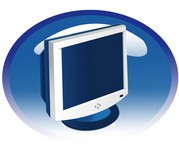- 简介: Traditional questionnaires are completed through the use of paper and pencil. In general cognitive theories, cognition processes the reading context with mental images and verbal systems in both associative and referential ways (Sadoski, Paivio & Goetz, 1991). The mental imagery that we experience while reading is now known to have powerful effects on comprehension, memory and appreciation for text (Sadoski, 1998). However, there exists a wide distribution in the vividness of the mental images that different individuals generate (Cui, Jeter, Yang, Montague & Eagleman, 2007). In order to dispel the doubts about the validity of the paper-based questionnaire (PBQ) in this pilot study, we try to provide specifically visual images for each questionnaire item. In our previous study, Wu, Yeh and Chang (in press) reported that animation-based test may complement the limits of traditional paper-and-pencil test in several ways; based on previous studies, the following conclusionswere found: (1) animation can be seen as a depictive external presentation, and it enables the concreteness of abstract concepts; (2) animation, when used in place of reality, can be more effective in presenting realworld contextual problems; and (3) animation can motivate learners by its cosmetic appeal. Therefore, we applied multimedia technology to design an animation-based questionnaire (ABQ) in order to manifest the problem/context situation. This pilot study attempts to explore the feasibility of an online contextualised ABQ for educational survey (Figure 1).
- 分类: 暂无分类
-
标签:
- feasibility
- 学习内容
- exploring
- 需要
- 提示
- 超链接
- 上载
- 内容

